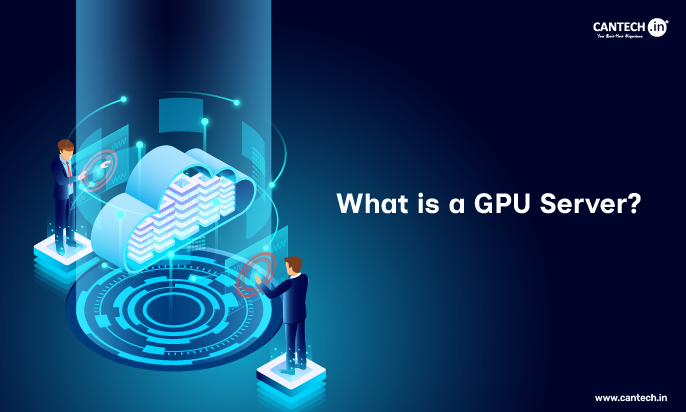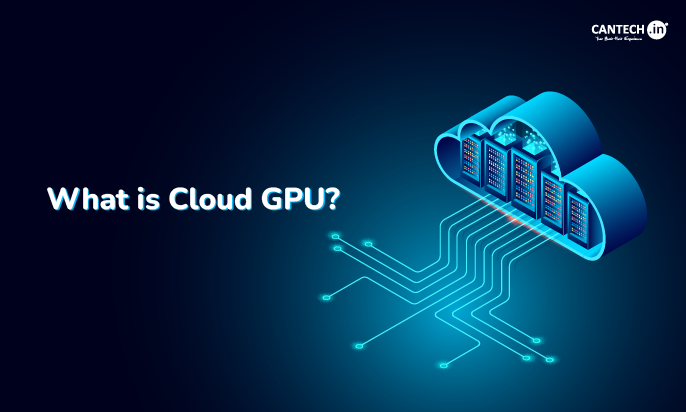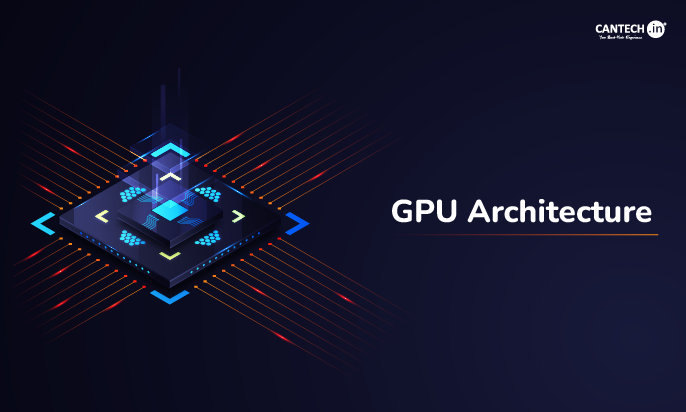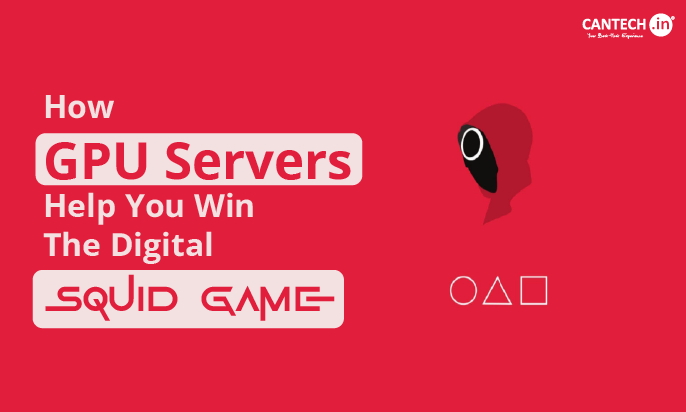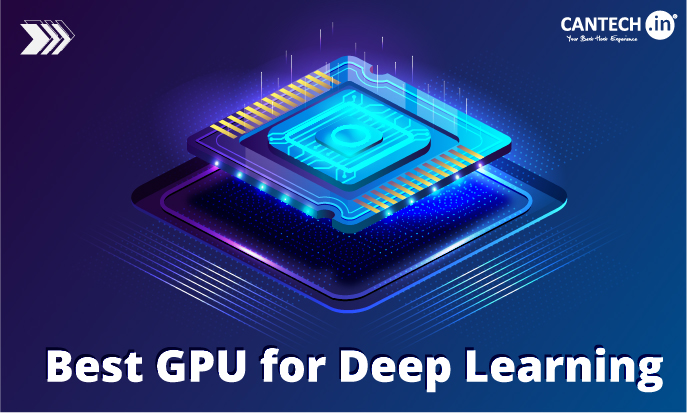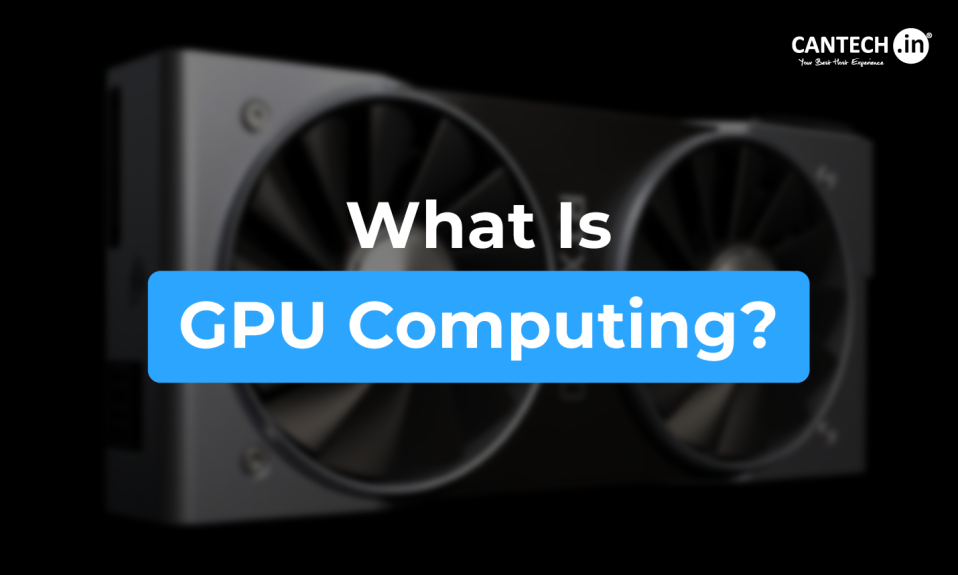Servers have a huge role to play to do a lot of the behind-the-scenes work. They keep websites, apps, artificial intelligence, big data, and everything running smoothly. Thus, they handle massive tasks.
However, traditional servers have limitations and cannot keep up with the rise in demand for speed and efficiency as technology advances. For this, you need the GPU servers.
This blog will discuss all about ‘what is GPU server?’
So, read this comprehensive guide to GPU Servers including its components, use cases, advantages and disadvantages. Also, we will compare GPU vs CPU and provide a brief guide on how to manage your GPU servers. Let’s start with the basics.
Basics of GPU Servers
Let’s start with the meaning, components, and use cases of GPU servers in this section –
What is GPU Server?
GPU servers use Graphics Processing Units (GPUs) along with standard Central Processing Units (CPUs). Basically, they are an advanced type of server.
CPUs can process general computing tasks whereas GPU servers use parallel processing to handle multiple tasks at the same time. They break down complex calculations into smaller tasks and execute them at once.
Thus, they are ideal for video/graphics rendering, artificial intelligence (AI) development, deep learning, scientific simulations, financial modelling, data-heavy applications or other fields that require faster and more efficient processing for high-speed computing power.
GPUs are of two types.
- Integrated GPUs are built into the motherboard.
- Discrete GPUs have separate hardware components
Examples of GPU server products
- NVIDIA DGX A100 and DGX SuperPOD (AI research and deep learning)
- NVIDIA A40, NVIDIA H100, and NVIDIA A100 (high-end computing and cloud AI services)
- AMD Instinct MI210 Accelerator (high-performance computing)
- Lenovo ThinkSystem SR680a V3 (AI and cloud computing)
Components of a GPU Server
Below are the key components of GPU server just like a regular server. However, it has additional hardware that supports high-performance computing.
1. Motherboard
The motherboard is the main circuit board where all components are connected. It determines how many GPUs, CPUs, RAM sticks, and storage drives can be installed.
2. CPU (Central Processing Unit)
GPU server relies on GPUs but it still needs a powerful CPU to manage system operations and distribute tasks efficiently.
3. RAM (Random Access Memory)
RAM is a temporary memory that affects server performance as more RAM means faster data processing. It is best to use the latest RAM versions to optimize performance.
4. Storage (Hard Drive or SSD)
High-speed SSDs (Solid State Drives) are prevalent in place of traditional HDDs. SSDs improve read and write speeds that further ensure smooth performance for AI, gaming, and data analytics.
5. Network Interface
Servers connect to a network through high-speed Ethernet ports. These ports enable fast data transfer between the GPU server and connected systems.
6. Power Supply
A GPU server needs a strong power supply to support multiple GPUs and other components. Higher-end servers often use multiple power units to ensure stable performance.
Use Cases for GPU Servers
GPU servers run some of the most demanding computing tasks. Below is the overview of GPU servers use cases for various industries that benefit from them –
1. AI & Machine Learning
GPU servers speed up training for deep learning models. Also, they Improve data processing for AI and neural networks. Moreover, they are also crucial in big data analytics and predictive modelling.
2. Scientific Simulations
Researchers can simulate real-world scenarios faster than CPUs. Also, they are widely used in physics, chemistry, and climate research.
3. 3D Rendering & Animation
GPUs are highly essential for game development, CGI, and visual effects. They are used in architecture, CAD, and engineering designs.
4. Cloud Computing & Virtualization
They enable remote workstations for high-performance computing. Moreover, they improve video streaming, real-time rendering, and VR experiences.
5. Video Processing & Encoding
They help content creators to produce high-quality videos efficiently. Also, they enhance video editing, rendering, and live streaming.
Advantages of a GPU Server
With the basics explained, let us now discuss the pros of GPU servers –
1. High-Speed Computing Power
With excellent computing performance, they are popular in industries that require high-speed processing such as AI training, machine learning, big data analysis, and video rendering.
2. Scalability & Flexibility
Businesses can easily scale their computing resources on demand. With cloud-based GPU servers and custom configurations on rent, they need not invest in expensive hardware.
3. Real-Time Monitoring & Reliability
Cloud-based GPU server providers like Cantech offer 24/7 monitoring and technical support to prevent downtime. Also, they are hosted in Tier-3 data centres that ensure continuous operation and security.
4. Cost-Effectiveness
Businesses can rent GPU servers on an hourly or monthly basis so they need not buy costly hardware. All in all, this does not need high upfront costs and provides flexible pricing options.
5. DDoS Protection & Security
Cloud GPU servers come with DDoS protection so sensitive data remains secure from cyberattacks.
6. High Network Uptime
Cloud GPU providers like Cantech guarantee maximum uptime. This prevents disruptions and keeps businesses operational.
Read more about what is Cloud GPU? its benefits, use cases and how it works?
Disadvantages of a GPU Server
On top of amazing performance, you need to consider a few cons of GPU Server too.
- GPU servers work best for parallel processing. However, they may introduce latency for single-threaded tasks. This can impact real-time gaming and certain applications.
- A high-end dedicated GPU server is expensive to buy. However, a cloud rental is better for many businesses.
- Cloud-based GPU servers need high-speed internet to function smoothly. Poor connectivity can lead to performance issues and increased latency.
- GPU servers consume more electricity than traditional servers. Businesses must invest in efficient cooling systems to prevent overheating.
GPU vs CPU – A Tabular Comparison
CPUs and GPUs both process data but they are meant for different types of workloads.
| Feature | CPU (Central Processing Unit) | GPU (Graphics Processing Unit) |
| Purpose | Used for general-purpose computing | To process graphics and parallel tasks like machine learning and gaming. |
| Core Structure | 4 to 32 cores that can handle tasks one at a time. | Thousands of cores work together to process tasks together |
| Speed | Higher clock speeds help execute complex and single-threaded tasks quickly. | Lower clock speeds are highly efficient for parallel processing. |
| Processing Power | Can handle complex instructions one at a time. | Can process large volumes of data in parallel. This makes them great for heavy graphics, AI, and data analysis workloads. |
| Use Cases | Great for running operating systems, and applications, and performing logic-heavy tasks. | GPUs are used in gaming, video rendering, AI, machine learning, and scientific research. |
How to Manage a GPU Server
Regular monitoring and maintenance is important for the best GPU server performance. You must undertake –
- Measure GPU usage – processing power
- Monitor temperature to ensure GPUs do not overheat.
- Track memory usage
- Manage electricity costs
- Monitor power consumption
- Clean Dust & Debris to prevent overheating of components and resultant performance issues.
- Update GPU Drivers to improve performance and prevent bugs.
- Check Cooling Systems like fans, thermal paste, and liquid cooling systems.
- Inspect the power supply to prevent system failures.
- Monitoring hardware health with regular checks to detect and prevent issues.
Cantech – Top GPU Server Provider in India
Cantech’s GPU servers offer powerful NVIDIA graphics cards for top-notch performance in heavy computing tasks.
These servers include –
- high-speed SSD and NVMe storage
- the best security measures
- 99.97% uptime guarantee
- the 24/7 support team
Learn more about Cantech’s Cloud GPU Servers and Dedicated GPU Servers now!
Conclusion
GPU servers provide high-performance computing with powerful parallel processing. They need higher investment and power but speed and efficiency make them highly useful for the companies having demanding workloads. You can rent dedicated GPU servers and cloud-based solutions to meet your specific needs. Contact Cantech and discuss your custom need today!
FAQs
What is a GPU Server?
GPU servers use GPUs and CPUs to handle complex computational tasks for AI, machine learning, video rendering, and data analytics. They specialise in parallel processing for faster and more efficient results of a huge amount of data.
What is multi-GPU processing?
A single GPU is not enough for some tasks. They require even more computing power. They use a multi-GPU processing method.
When multiple GPUs work together on the same task, it is called multi-GPU processing. This improves speed and efficiency in fields like deep learning, scientific computing, and 3D rendering.
